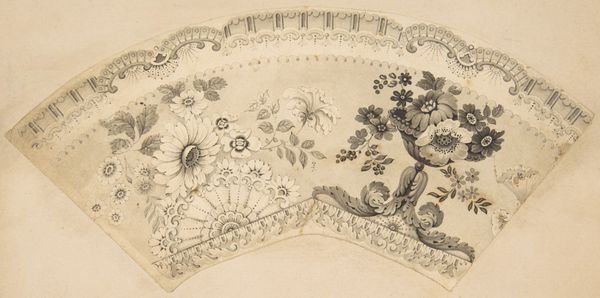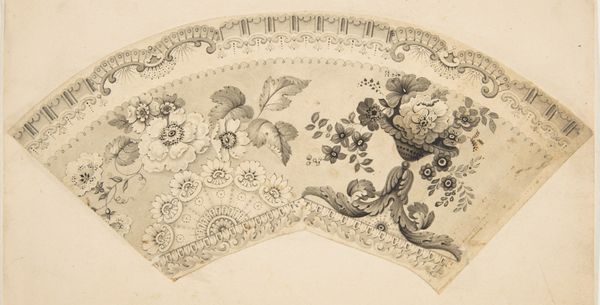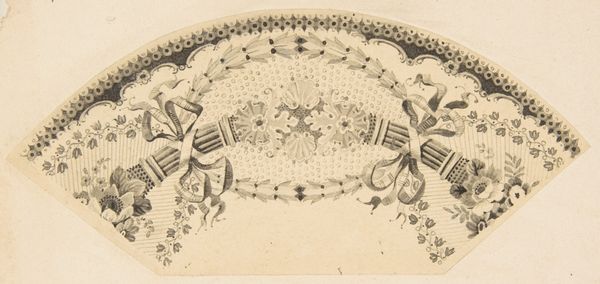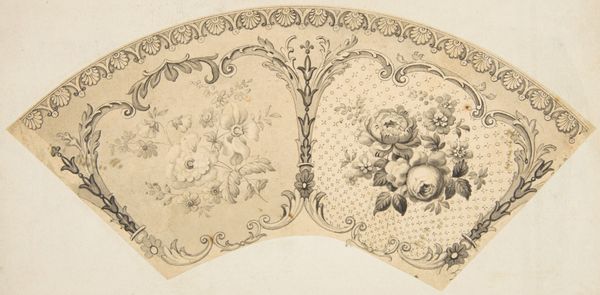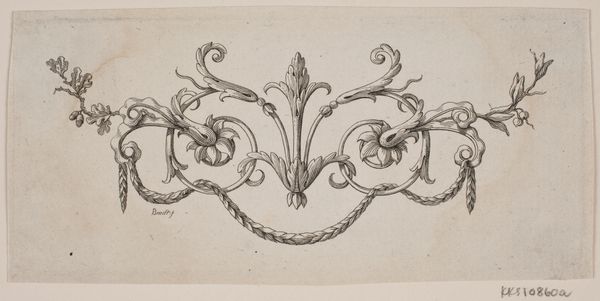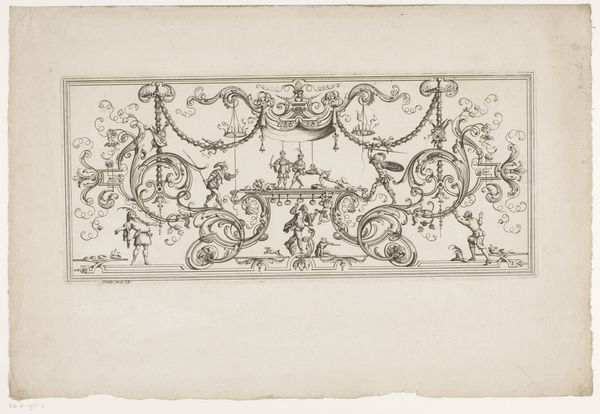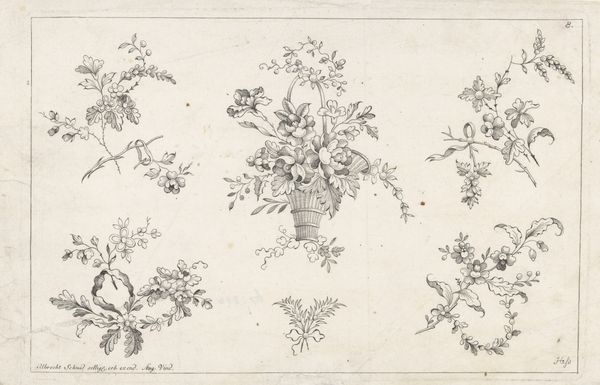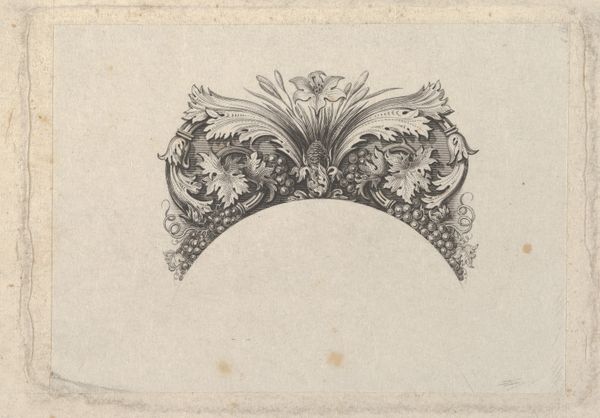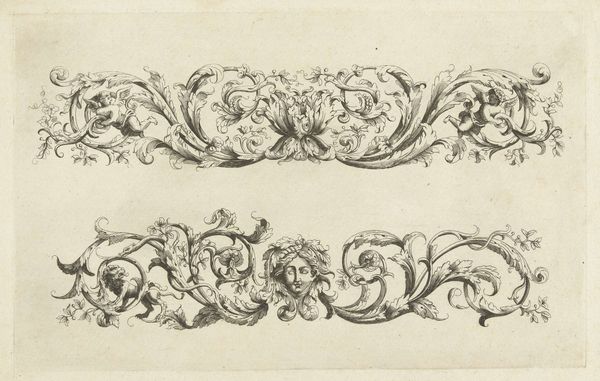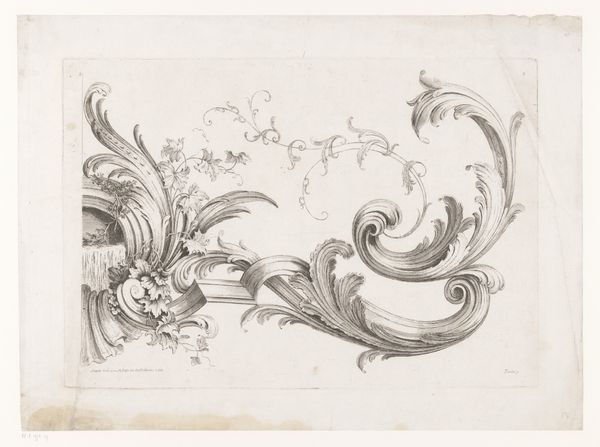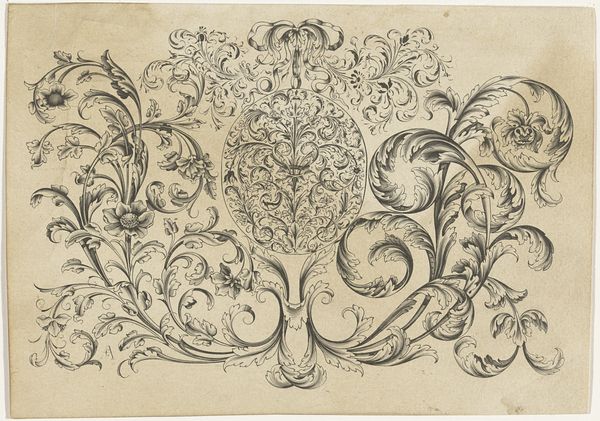
drawing, print, paper, pencil
#
pencil drawn
#
drawing
# print
#
pencil sketch
#
landscape
#
paper
#
pencil drawing
#
pencil
#
decorative-art
Dimensions: sheet (irreg.): 6 1/8 x 5 1/8 in. (15.6 x 13 cm) mount: 4 15/16 x 6 3/4 in. (12.5 x 17.2 cm)
Copyright: Public Domain
Curator: Here we have a drawing from the 19th century, attributed to an anonymous artist, entitled "Lace Design." You can find it in the collection of the Metropolitan Museum of Art. Editor: Oh, how charming! It whispers of genteel society, doesn't it? I’m getting bridal vibes mixed with the ghost of afternoon tea. Is it meant for a fan, perhaps? Curator: That's a keen observation. The composition does evoke the shape of a fan. Beyond that, it showcases a deep dive into symbolic representation of beauty and status of the time, the floral arrangements referencing, of course, not only the aesthetic beauty but also alluding to particular virtues associated with different flowers. Editor: Yes! It’s like a coded language woven into the pattern. That garland looks rather like intertwined promises, doesn’t it? All those little circles in the top border… almost like a secret society of doilies! Curator: Precisely. The pattern could very well point toward not just decoration, but the rigid social order that the lace evokes. Consider also how lace in particular functioned historically. It's very interesting if you follow it along the lines of power. This kind of skill took an enormous investment of time, symbolizing a detachment from the realities of labour that, of course, spoke volumes. Editor: I love that – the hidden labor! It makes you wonder about the unseen hands behind this seemingly frivolous design. Did the artist understand the weight of what they were rendering, I wonder? Perhaps adding a tiny, rebellious stitch somewhere, a deliberate imperfection… a scream in a teacup! Curator: What a fabulous reading, yes! The beauty, literally hand-in-hand with labor…it opens up interesting perspectives to think how meanings might alter and stay constant as things morph over epochs, if this object reappears again and again, will it speak to all epochs in same cadence? Fascinating. Editor: Absolutely fascinating, especially considering that a relatively simple pattern hides the story of so many power struggles behind the creation of what can easily appear superficial to some. The layers just keep going. Curator: Exactly. Art, in its beautiful or deceptively straightforward forms, provides such opportunities for analysis of historical patterns and contexts. Editor: Indeed. Next time I see lace, I'll try to remember that this textile’s seemingly innocent swirls represent something a great deal more than pretty patterns.
Comments
No comments
Be the first to comment and join the conversation on the ultimate creative platform.
